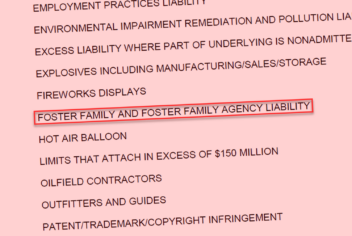Since the United States Equal Employment Opportunity Commission (EEOC) issued its enforcement guidance surrounding workplace retaliation last summer, employers have been on notice to exercise caution when taking adverse action against an employee following protected activity. Absent clearly documented evidence of a legitimate business reason for adverse action, like termination, such action taken by an employer following an employee’s participation in protected activity may be deemed as retaliatory, leaving the burden on the employers to defend their actions. Protected activity includes such things as: requesting an accommodation; taking a leave of absence; or participating in an investigation.
Laying out a three-prong test, the EEOC tells us that in order to establish a claim of retaliation, employees merely need to show that: 1) they were participating in protected activity; 2) they suffered some kind of adverse employment action; and 3) there is a causal link between the activity and employment decision.
Unfortunately, even employment actions taken with no retaliatory motive and made in good faith may undergo scrutiny if an employee feels they are being punished. Therefore, while the first two prongs of the EEOC’s test may appear straightforward, the following should be considered as best practices in order to minimize risk and disconnect the link between protected activity and subsequent adverse employment action:
- Maintain a written policy that is made available to all employees regarding zero tolerance for retaliation, including ways an employee may report actual or suspected retaliatory conduct.
- Have written employment policies and consistently apply them.
- Review policies and practices to ensure employees are not deterred from engaging in protected activity.
- Train managers and supervisors on your anti-retaliation policy and how to handle employee discipline following protected activity.
- Promptly and thoroughly investigate all complaints.
- Accurately report job performance on performance evaluations. A below-average performing employee should not receive all superior marks. Use factual examples to support less than satisfactory ratings.
- Clearly and thoroughly document business decisions your nonprofit may make that employees may consider as adverse (e.g., moving office space or eliminating positions).
- Document job-related reasons for all actions, including poor performance or unwillingness to perform duties, to link adverse actions to poor performance rather than protected activity.
- Ensure employees are aware of their job requirements by having up to date job descriptions, acknowledged by the employee.
- Evaluate options in lieu of termination or discipline, including coaching, performance improvement plans, and additional training, especially if the adverse action is close in time to the protected activity.
Employers should also be aware that while retaliation may be as obvious as a termination, it can also be less recognizable, such as with overlooking an employee for a promotion, directing another employee to engage in harassment or retaliatory conduct, and criticizing or questioning an employee for filing a complaint.
Because the EEOC has linked adverse action to protected activity despite the passage of years between events, it’s critical for employers to always document and consistently apply policies.
While retaliation is prohibited conduct under state and local laws, employees also can find protection under Title VII of the Civil Rights Act of 1964 (Title VII), the Age Discrimination in Employment Act (ADEA), Title V of the Americans with Disabilities Act (ADA), Section 501 of the Rehabilitation Act (Rehabilitation Act), the Equal Pay Act (EPA), and Title II of the Genetic Information Nondiscrimination Act (GINA).
*Note: While this article focuses on the employment relationship, retaliation is prohibited against job applicants and volunteers.
Related Links:
Questions and Answers: Enforcement Guidance on Retaliation and Related Issues:
https://www.eeoc.gov/laws/guidance/retaliation-qa.cfm
Small Business Fact Sheet: Retaliation and Related Issues: https://www.eeoc.gov/laws/guidance/retaliation-factsheet.cfm





